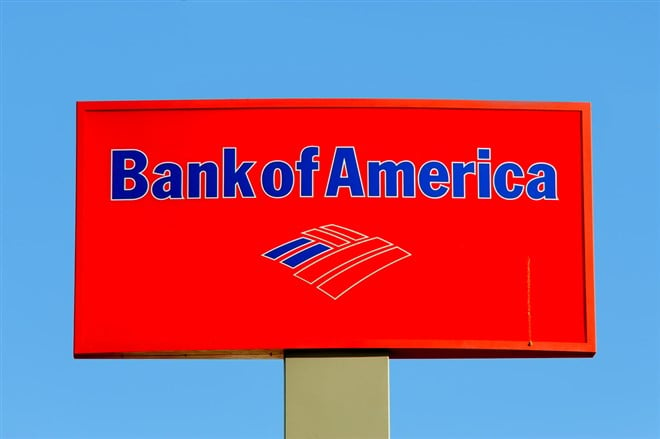
Warren Buffett has explained market cycles and overall sentiment views toward stocks by expressing that interest rates act as a gravitational pull affecting equities. In this sense, when interest rates increase, gravity affects stocks, thus pulling them down or making it much harder to continue an uptrend.
One sector that is very hard to analyze and place a target value on, whether purposely or accidentally, is the banking sector. Investors often scratch their heads at the first sight of a bank's balance sheet and notice that cash is a liability, but loans are an asset. When this basic dynamic sinks in, the few who stick to analysis all the way through and grasp it will notice a few drivers that make bank stocks more favorable and popular during certain market environments.
Since Silicon Valley Bank (NASDAQ: SIVB) announced its failure in the open markets, and contagion effects came to light when regional banks like First Republic (NYSE: FRC) called for federal funding help as they faced ongoing liquidity crises, sentiment toward the banking sector has diminished, as seen in the price of the S&P Regional Banking ETF (NSYE: KRE), which lost close to 50% of its value in just one week. However, a different story is holding up for the bigger banks, as evidenced by the Financial Select Sector SPDR Fund ETF (NYSE: XLF), which only lost 16% of its value during the same period.
The trust protocol
When these regional banks started to shake, and news talking heads were all covering their stories, mentioning how the contagion effects are not entirely measured and known, thousands of depositors and account holders fled to the one place they felt would be safest. With approximately $15 billion USD deposited at Bank of America (NYSE: BAC) by this same population of worried depositors, showcasing the preferential safety in a household name mega bank, it is no wonder that Warren Buffett himself has chosen Bank of America to park 9% of his investable assets in the bank's stock. This position by the Oracle of Omaha represents an ownership stake of around 9-11% of the bank and takes a subsequent number two ranking in terms of his biggest investments.
The sturdiness of Bank of America, showcased by depositor trust and Buffett's backing, makes it one of the top choices for investors looking to take advantage of this recent decline across the sector. As the bank's second largest owner may say "Buy when there's blood on the streets, especially if the blood is yours."
Tailwinds at play
Pens and notepads should be coming out because investing in a bank, much like working for a bank, should be boring and very technical. Since interest rates, loans, and deposits at banks are the main drivers of success and valuations for the underlying banking stocks, a few key trends will be of utmost importance to investors who have Bank of America on their watchlists.
During the periods of 2009 to 2015, interest rates were pretty low, hovering around 0.25% to 1.00%. This made mortgages and other common loans deliver thin profits for the banks that issued them since the interest rate income was so low. In the case of Bank of America, this drove management to carry a Loan to Deposit ratio (LDR), computed as total loans divided by total deposits, of over 70% during this low-interest rate period. Subsequently, net income margins remained below 10%, and book values per share similarly compressed.
Fast forward to 2016-2020 when interest rates started to rise, and the bank's LDR ratio hovered between 58-65% as they needed to issue fewer loans to achieve desirable profitability. Net income margins increased to 20-25%, and book value per share saw annual growth rates between 8-10%, thus making stockholders happy campers.
This elevated interest rate dynamic, which brought on periods of higher profit margins and book value per share, was reflected in the market perception toward the stock. In the period of 2015 to 2021, the P/B ratio (price to book) remained between 1.0x and 1.2x, whereas the lower interest rate periods brought on ratios below 1.0x.
FED Chairman Jerome Powell has stated that higher interest rate ceilings are on the way, and most economists are pointing to at least 2-3 more years of elevated interest rates. This is amazing news for Bank of America investors. If history is any guide, they can expect positive trends to follow. Markets can already see that in 2022, which marked the beginning of interest rate hikes, the bank saw net profit margins of 27%, interest income growth of 22%, and book value per share of $33.45. With the stock currently trading at 0.9x book value, and higher interest rates calling for 1.0x to 1.2x book value multiples, some of the initial analyst targets may make more sense.
A ticking value bomb
One very important aspect - perhaps the most important - is that $15 billion USD influx of deposits at the bank. When analysts look at the subsequent effects on the balance sheet composition, the following comes to light.
- $15 billion USD in deposits due to perceived safety and more attractive yields by the bank will automatically allow for more loans to be generated, and thus increased interest income for the bank.
- Keeping a responsible LDR of 55.7% would translate to about $8.3 billion USD in new loans from all these deposits. Assuming the bank keeps generating a historical 6.6% return on its loans this would translate to a 6.2% growth in net interest income.
- This increased top line, assuming steady expenses associated with the loan generations and normal operations, would represent diluted Earnings per share of $3.62, which currently would trade at 7.7x P/E.
- Lastly, this balance sheet reshuffle represents book value per share values of $36.84, which if applied to a 1.2x P/B multiple normal of higher interest rate environments, would value this stock at a median of $45.70 per share.
All of these assumptions can be played around with, and if they are sensible to expectations, analysts could realize there is more upside than meets the eye in Bank of America. Should investors follow in the same path?




